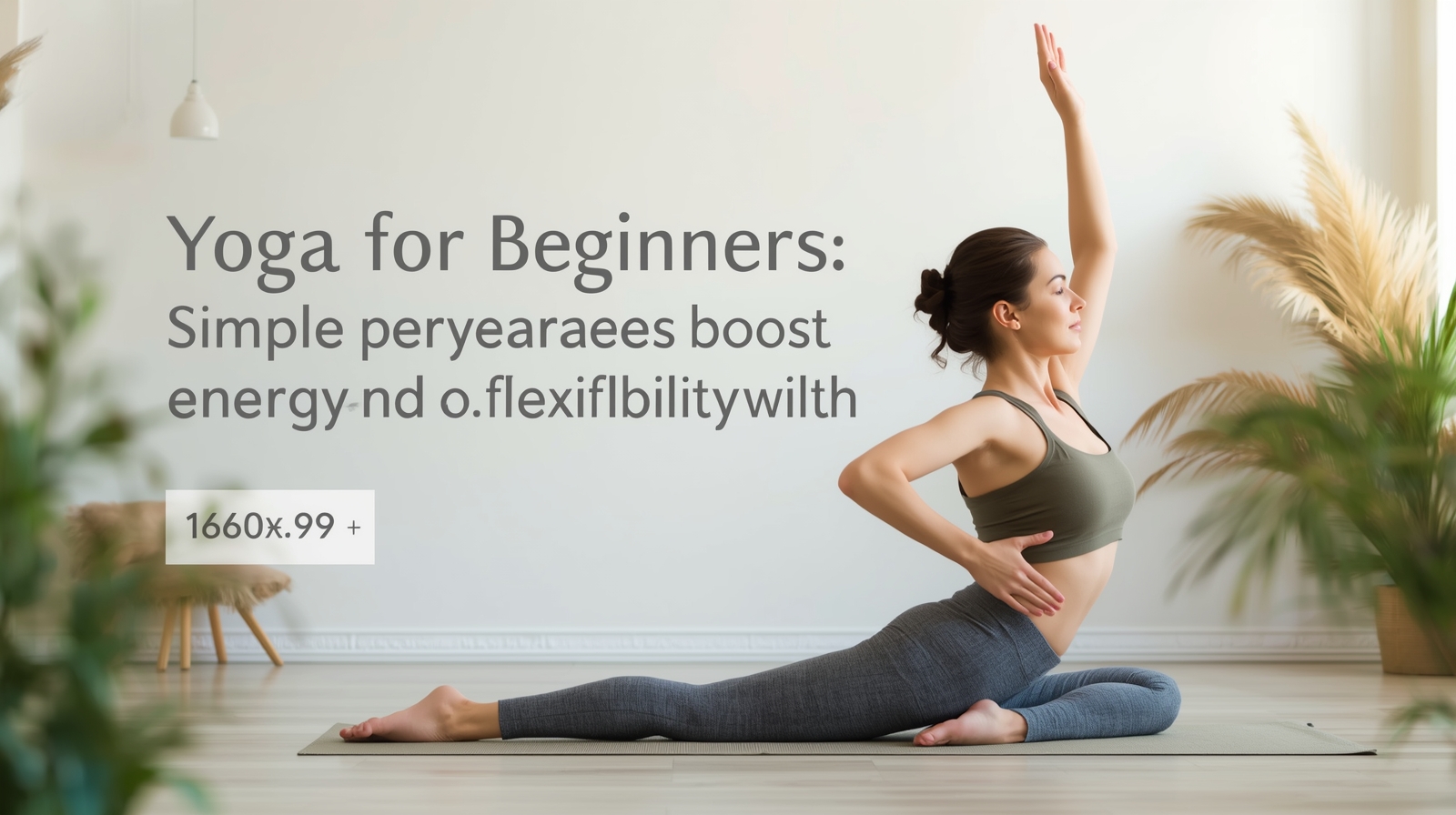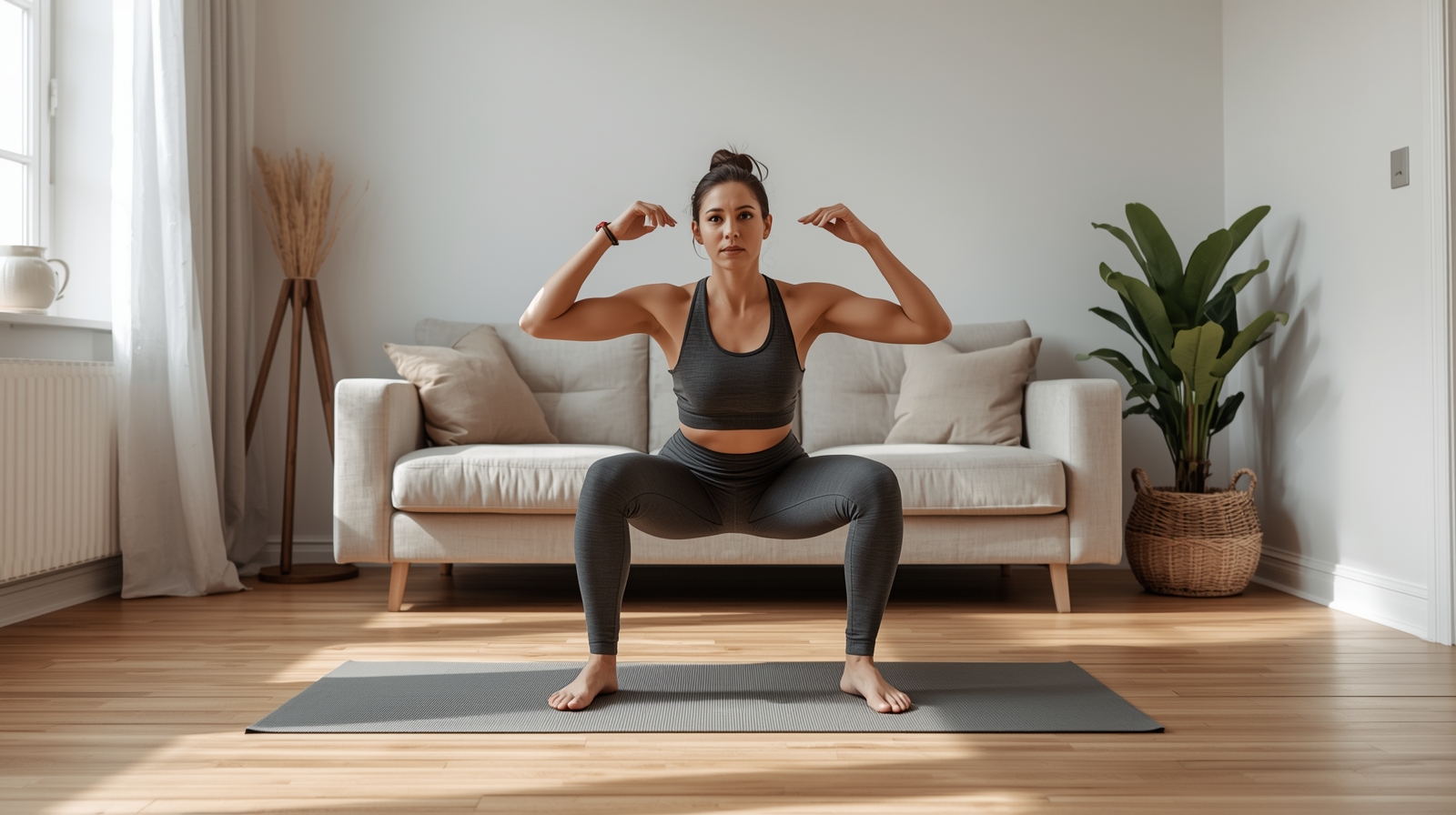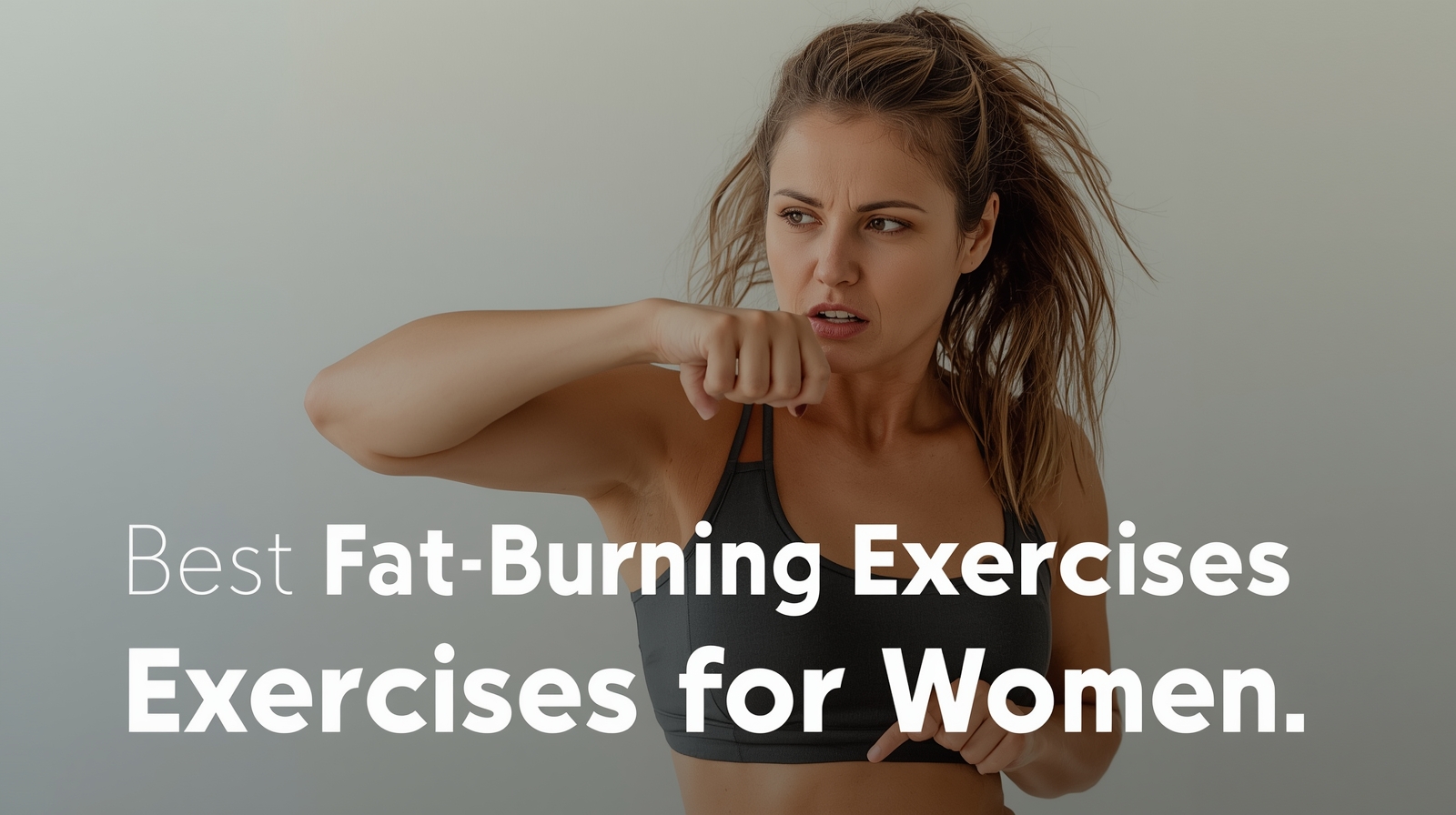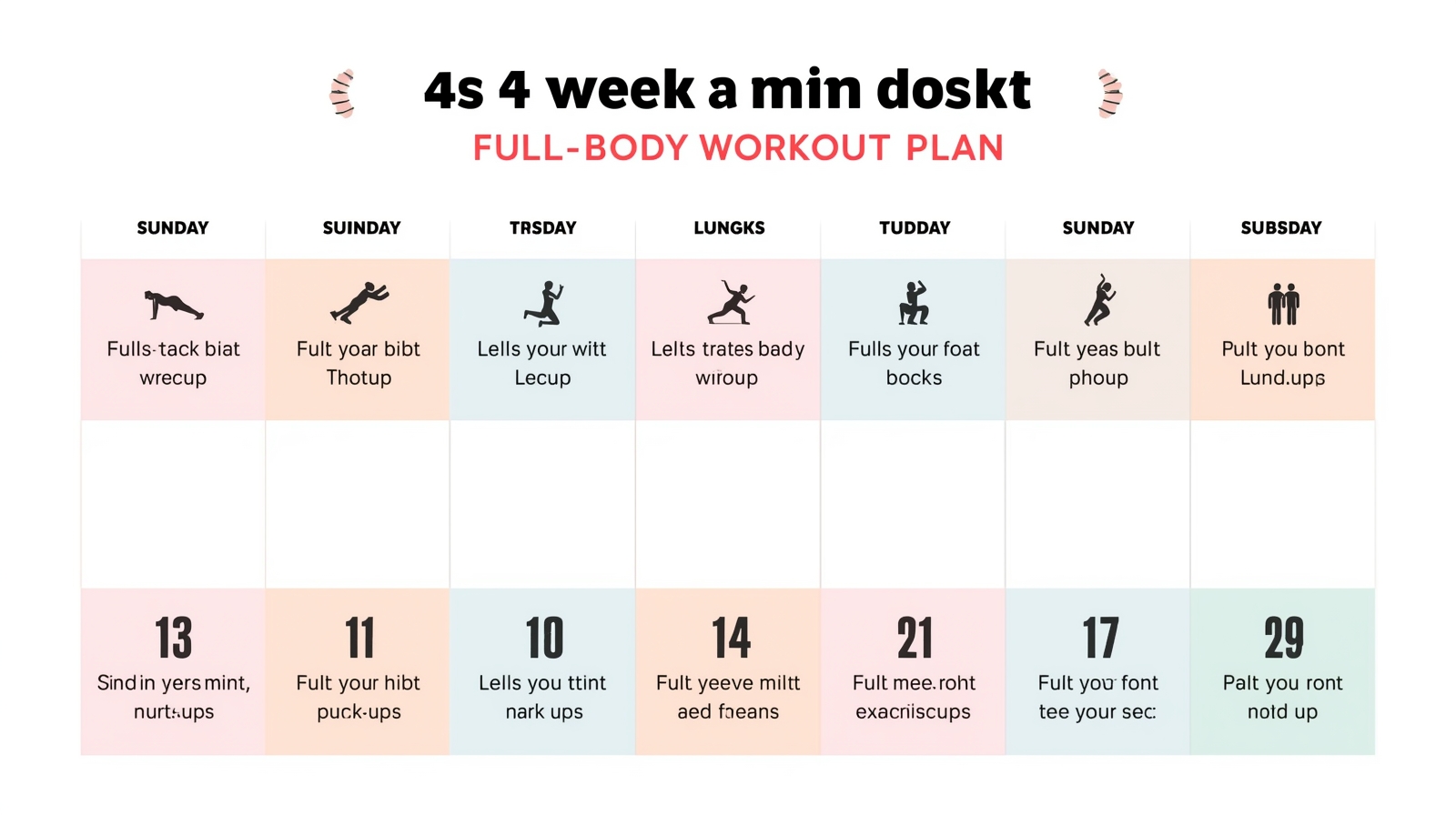Yoga is an ancient practice that combines movement, breath control, and awareness. It helps the body stay strong and the mind stay calm. For beginners, yoga can seem complex, but it does not need to be. You can start with a few simple poses that fit easily into your routine.
This guide explains how to begin yoga safely at home. You will learn how each pose supports energy, flexibility, and focus. Every movement can be done with no special tools, only a mat or soft surface.
What Yoga Does for the Body
Yoga builds flexibility through gradual stretching of muscles and joints. It also improves balance, which helps with daily movement and posture. Regular practice can support better breathing and circulation, which increase energy levels during the day.
In addition, yoga helps reduce tension. Controlled breathing signals the nervous system to relax. Over time, this lowers stress and supports a calmer mindset.
For women balancing work, family, and self-care, short sessions of yoga can make a noticeable difference in both body and focus.
Preparing for Practice
Before starting, choose a quiet space where you can move freely. A yoga mat helps provide grip, but a towel or carpet can also work. Loose, comfortable clothing allows free movement.
Practice barefoot if possible, as this improves stability. Keep a water bottle nearby and avoid practicing right after eating.
Begin with five minutes of slow breathing to prepare the mind and body.
Basic Breathing Setup:
Sit comfortably with a straight spine.
Inhale through the nose for four seconds.
Hold for one second.
Exhale slowly for four seconds.
Repeat this for five rounds before starting.
Section 1: Warm-Up Poses
Warming up increases blood flow and prepares muscles for movement.
- Cat-Cow Stretch (Marjaryasana-Bitilasana)
How to do it:
Start on hands and knees with shoulders above wrists and hips above knees.
Inhale and arch the back slightly, looking up.
Exhale and round the spine, tucking the chin.
Move slowly between both positions for 60 seconds.
This flow wakes up the spine and supports coordination between breath and movement.
- Child’s Pose (Balasana)
How to do it:
Sit back on your heels with knees apart.
Lower your forehead toward the floor and stretch arms forward.
Breathe slowly and hold for 30–60 seconds.
This resting position allows muscles to release tension and prepares the mind for focus.
Section 2: Standing Poses for Energy
Standing poses build strength, balance, and circulation. They also increase alertness, making them ideal for morning practice.
- Mountain Pose (Tadasana)
How to do it:
Stand tall with feet together.
Distribute weight evenly across both feet.
Relax shoulders, lengthen the spine, and engage the core.
Take five slow breaths.
This pose sets the foundation for other standing positions and improves body awareness.
- Forward Fold (Uttanasana)
How to do it:
From standing, exhale and fold forward from the hips.
Keep knees slightly bent if needed.
Let the head hang naturally.
Hold for 30 seconds and rise slowly.
This stretch releases tension in the back and legs while calming the mind.
- Warrior I (Virabhadrasana I)
How to do it:
Step one foot back about three feet.
Bend the front knee until it aligns above the ankle.
Keep the back leg straight and arms overhead.
Hold for five breaths and switch sides.
Warrior I improves leg strength, balance, and stability.
- Warrior II (Virabhadrasana II)
How to do it:
From Warrior I, open hips and arms to the sides.
Keep front knee bent and back leg firm.
Look over the front hand and breathe slowly.
Hold for 30–45 seconds per side.
This pose improves endurance and helps focus the mind on steady breathing.
- Triangle Pose (Trikonasana)
How to do it:
From a wide stance, turn the right foot out.
Extend both arms parallel to the floor.
Reach the right hand forward and place it on the shin or ankle.
Extend the left arm upward and gaze toward it.
Hold for 30 seconds per side.
This stretch supports flexibility in the legs, hips, and shoulders.
Section 3: Floor Poses for Flexibility
These poses target the hips, spine, and legs, helping improve range of motion without strain.
- Seated Forward Bend (Paschimottanasana)
How to do it:
Sit with legs extended straight.
Inhale, raise arms, and exhale as you fold forward from the hips.
Keep the spine long.
Hold for 30–60 seconds.
This movement supports the lower back and stretches the hamstrings.
- Butterfly Pose (Baddha Konasana)
How to do it:
Sit with soles of the feet together.
Hold the feet and let the knees drop gently toward the floor.
Keep the spine upright.
Breathe steadily for 45–60 seconds.
This pose helps open the hips and encourages relaxed breathing.
- Cobra Pose (Bhujangasana)
How to do it:
Lie on your stomach with hands under shoulders.
Press through the palms and lift the chest slightly off the ground.
Keep elbows close to the body.
Hold for 20–30 seconds and lower down.
This pose strengthens the spine and opens the chest, helping improve posture.
- Bridge Pose (Setu Bandhasana)
How to do it:
Lie on your back with knees bent and feet flat.
Press through the feet and lift hips upward.
Hold for 20–40 seconds while breathing evenly.
Lower slowly and rest.
This movement engages the legs and lower back, improving overall stability.
- Supine Twist (Supta Matsyendrasana)
How to do it:
Lie on your back and bring one knee across the body.
Extend the opposite arm to the side.
Turn the head gently in the opposite direction.
Hold for 30 seconds and switch sides.
This twist helps release tension in the spine and promotes relaxation.
Section 4: Cooling Down and Rest
A yoga session should always end with rest to help the body absorb the benefits of practice.
- Legs-Up-the-Wall Pose (Viparita Karani)
How to do it:
Sit beside a wall and swing your legs up as you lie on your back.
Let your arms rest beside your body.
Breathe slowly and stay for one to three minutes.
This gentle inversion supports circulation and calms the body.
- Corpse Pose (Savasana)
How to do it:
Lie flat on your back with arms by your sides.
Close your eyes and breathe naturally.
Stay in this position for five minutes.
This final pose helps the body rest completely and the mind reset.
Section 5: Breathing Techniques for Energy
Breath control, or pranayama, helps regulate the body’s energy. Beginners can start with simple breathing patterns.
Alternate Nostril Breathing (Nadi Shodhana)
How to do it:
Sit comfortably with a straight spine.
Close the right nostril with your thumb and inhale through the left.
Close the left nostril with your ring finger and exhale through the right.
Inhale through the right, exhale through the left.
Continue for 5–10 rounds.
This technique balances breathing and focus, helping reduce restlessness.
Section 6: Building a Simple Routine
For beginners, shorter sessions encourage consistency.
Sample 20-Minute Routine:
Cat-Cow – 1 minute
Child’s Pose – 1 minute
Mountain Pose – 1 minute
Warrior I – 1 minute each side
Triangle Pose – 1 minute each side
Seated Forward Bend – 2 minutes
Bridge Pose – 1 minute
Supine Twist – 1 minute each side
Legs-Up-the-Wall – 2 minutes
Corpse Pose – 5 minutes
This plan balances movement, flexibility, and rest.
Section 7: Frequency and Progress
Practice three to five times per week for best results. Begin with short sessions and increase time gradually. The goal is not speed or intensity, but regular engagement.
Over time, you may add more challenging poses such as plank, downward dog, or chair pose. Listen to your body and avoid forcing any movement.
Tracking your progress with notes helps maintain motivation. Record the poses practiced, how long you held them, and how your breathing felt.
Section 8: Common Mistakes Beginners Should Avoid
Holding the breath: Always breathe evenly through the nose.
Overstretching: Move within your current range of motion.
Skipping warm-up: Muscles respond better when gently prepared.
Comparing progress: Yoga is personal. Focus on consistency rather than perfection.
Section 9: Benefits Beyond Flexibility
The effects of yoga extend beyond muscle length or strength. Regular practice supports mental focus and balance in daily life. It encourages awareness of breathing and posture, which influence how energy moves through the body.
Many women notice better rest, less stiffness, and increased concentration after several weeks of practice.
Section 10: Long-Term Consistency
Sustainability is key. Practicing a few times each week is better than occasional long sessions. Try to practice at the same time daily, such as early morning or evening, to build a habit.
You can also combine yoga with walking or light strength training for overall fitness.
Yoga does not replace other exercise forms; instead, it complements them by improving flexibility, recovery, and control.



